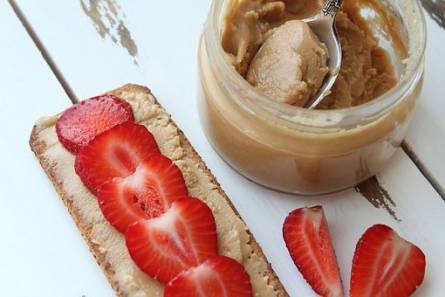Bread is a staple food in many diets around the world and comes in various types, including whole grain, rye, and white. However, it’s crucial to consider how much bread you consume daily.
The Average Amount of Bread Per Day for Adults
The USDA’s guidelines suggest six servings of grains per day for adults with at least half of those being from whole grains. Bread, most typically, contributes to these servings. However, the specific amount may vary depending on your dietary needs and activity level.
On the plus side, moderate bread consumption offers benefits such as providing necessary carbohydrates for energy and contributing to your daily fiber intake, particularly if you choose whole grain varieties.
On the downside, excessive bread consumption, especially of refined white bread, may lead to weight gain and other health issues such as blood sugar spikes or digestive problems.
Is It Possible to Eat a Lot of Bread All the Time?
Indeed, incorporating bread into your everyday diet is feasible, but it’s critical to consume it mindfully and in moderation. Overindulgence in bread, particularly the refined type like white bread, can lead to weight gain and spike your blood sugar levels, causing health concerns. Bread, however, is not an enemy but an important component of a balanced diet providing necessary carbohydrates and contributing to fiber intake when opting for whole grain varieties.

Eating a lot of bread is only beneficial if you are mindful of the type and amount you consume. Choosing whole grain bread over white bread is healthier as it offers more nutrients and slows digestion, prolonging satiation and preventing blood sugar spikes. Also, your activity level and dietary needs should be factored into the amount of bread consumed daily.
Benefits of Bread
Bread is a dietary staple in many cultures and offers several health benefits when consumed mindfully. It serves as a significant source of carbohydrates, providing your body with necessary energy. Whole grain varieties contain a good amount of dietary fiber, offering benefits like improved digestion, sustained satiation, and glucose regulation.
Moreover, bread is fortified with essential nutrients such as iron and folic acid. Iron aids in the formation of red blood cells, while folic acid supports physical growth and brain development. In addition, the selenium, a trace mineral found in bread, contributes to immune health and thyroid function.
However, it’s essential to consider potential downsides when bread is consumed excessively. Overindulging, especially in white bread, can cause weight gain and increase blood sugar levels. Bread consumption should be balanced with other nutritious foods, keeping your dietary needs and activity level in mind.
Health Risks of Eating a Lot of Bread
On the flip side, while bread can be a healthy part of your diet, overconsumption can lead to certain health issues. Chiefly, bread is high in carbohydrates and can contribute to an excessive caloric intake, potentially leading to weight gain if not balanced with an active lifestyle.
Additionally, white bread, due to its processed nature, can cause spikes in blood sugar levels, posing a risk to individuals with or predisposed to diabetes. Moreover, it lacks the dietary fiber found in whole grain varieties, which is essential for digestion and maintaining a feeling of fullness, potentially leading to overeating.
Some individuals may also face gluten intolerance or sensitivity, making bread consumption problematic. Symptoms can range from bloating, diarrhea, and abdominal pain to fatigue and skin problems.
Which Bread is Healthier to Eat
When incorporating bread into your diet, choosing the healthiest type makes a significant difference.
White bread, although popular, poses some health risks due to its high carbohydrate content and potential to spike blood sugar levels. It lacks fiber and essential nutrients due to the heavily processed nature of white flour.

Whole grain bread, on the other hand, is a much healthier option. Made from whole grains that contain all parts of the grain — the bran, germ, and endosperm, whole grain breads provide more fiber, B vitamins, and iron. This fiber content aids digestion and satiety, preventing overeating.
Rye bread, made from rye grain, is also an excellent choice. It has a high fiber content and a low Glycemic Index (GI) that helps to regulate blood sugar levels.
Popular Diets Based on Bread
Bread has been a staple food for centuries and forms the basis of many diets worldwide. However, as with any food, consuming it in moderation is key.
- The DASH Diet:
- The DASH diet, initially created for managing hypertension, has become well-liked for its holistic advantages to one’s health.
- This meal plan focuses on incorporating whole grains, fruits, vegetables, low-fat dairy items, lean proteins, and beneficial fats.
- Whole wheat bread is encouraged as a source of fiber and nutrients.
- The DASH diet promotes reducing sodium, added sugars, and saturated and trans fats.
- The Gluten-free Diet:
- This diet is primarily followed by individuals with celiac disease or gluten sensitivity.
- Gluten, a protein found in wheat, barley, and rye, must be avoided.
- To replace traditional bread, gluten-free options like rice bread, cornbread, or bread made from gluten-free grains are consumed.
- It is essential to carefully read food labels and opt for certified gluten-free products.
- The Paleo Diet:
- The Paleo diet mimics the eating patterns of our Paleolithic ancestors.
- While bread is generally avoided, some variations of the diet allow for the consumption of certain types of bread made from alternative flours like almond or coconut flour.
- The focus is on consuming lean meats, fish, fruits, vegetables, nuts, and seeds while excluding dairy, grains, legumes, and processed foods.
- The Whole30 Diet:
- The Whole30 diet aims to reset your eating habits by eliminating potentially inflammatory foods for 30 days.
- Traditional bread is excluded during this period.
- Instead, compliant alternatives made with almond, coconut, or cassava flour can be consumed sparingly.
- The diet emphasizes whole foods like lean proteins, fruits, vegetables, and healthy fats.
- The Low-carb Diet:
- Low-carb diets like Atkins and the ketogenic (keto) diet restrict carbohydrate intake.
- Traditional bread is generally not included, but low-carb bread or bread alternatives made with almond or flaxseed meal may be enjoyed in moderation.
- These diets emphasize high-fat foods, moderate protein, and very low carbohydrates to induce ketosis, where the body burns fat for energy instead of carbs.
- Bread and Water Diet:
- Bread Selection: when following the bread and water diet, it is important to choose the right type of bread.
- Water Consumption: hydration is key when it comes to the bread and water diet.
- Portion Control: to achieve calorie deficit, portion control is essential.
- Nutritional Supplementation: while bread can provide some nutrients, it is essential to ensure a well-rounded diet.
- Exercise Routine: the bread and water diet should be complemented with regular exercise.
- Mindful Eating: take time to savor each bite of bread, chew it thoroughly, and enjoy the taste and texture.
- Monitor Body Reactions: it’s crucial to pay attention to how your body reacts to the bread and water diet.
- Sustainable Lifestyle Changes: it’s important to remember that the bread and water diet should not be a long-term solution.
A diet that includes a high intake of bread, especially of the processed variety, may lead to unintended consequences such as weight gain due to the high calorific content. Furthermore, those with gluten intolerance or celiac disease could experience adverse effects from excessive bread consumption. Therefore, choosing healthier bread types like whole grain or rye, and consuming in moderation, helps ensure a balanced diet whilst mitigating potential health risks.









